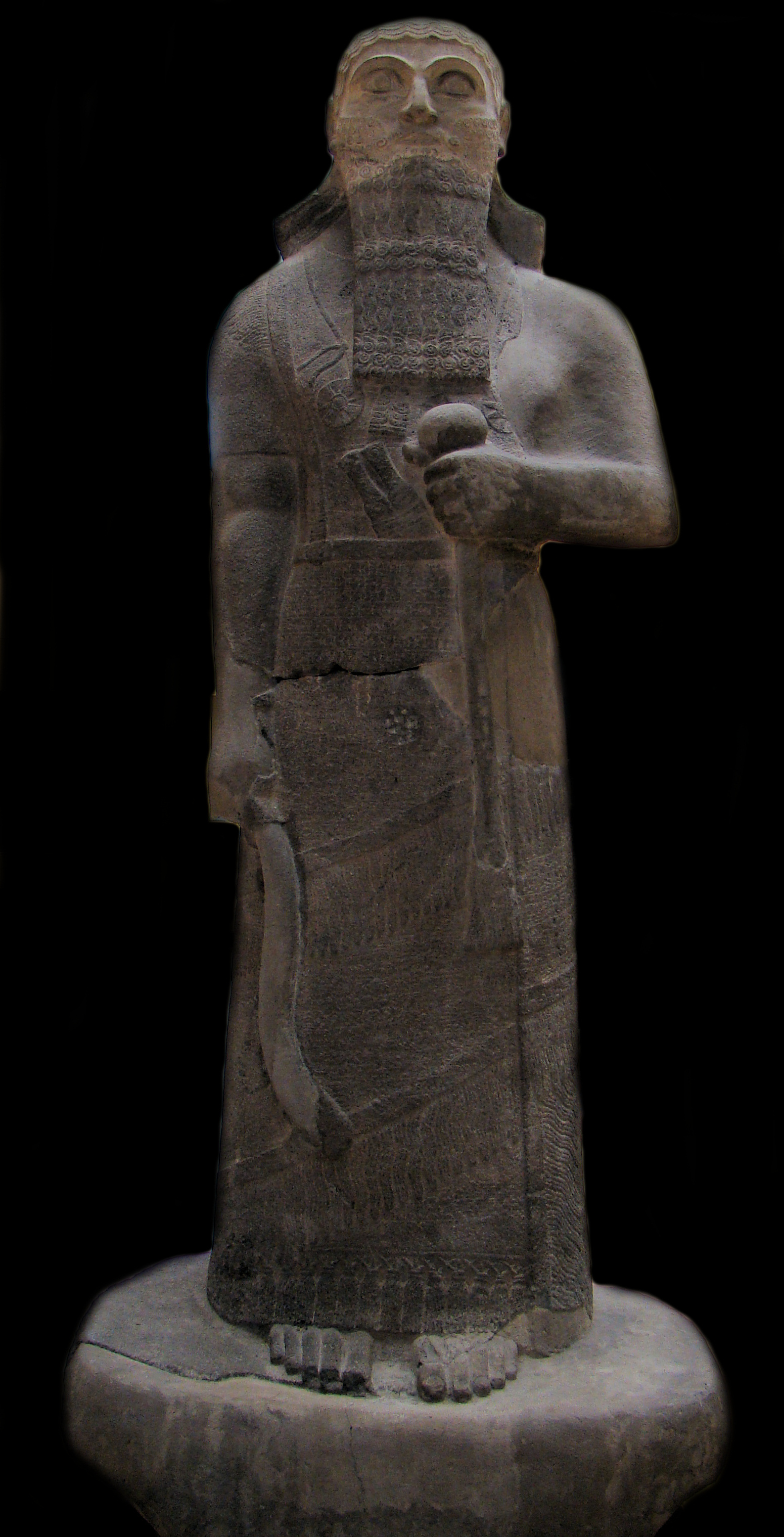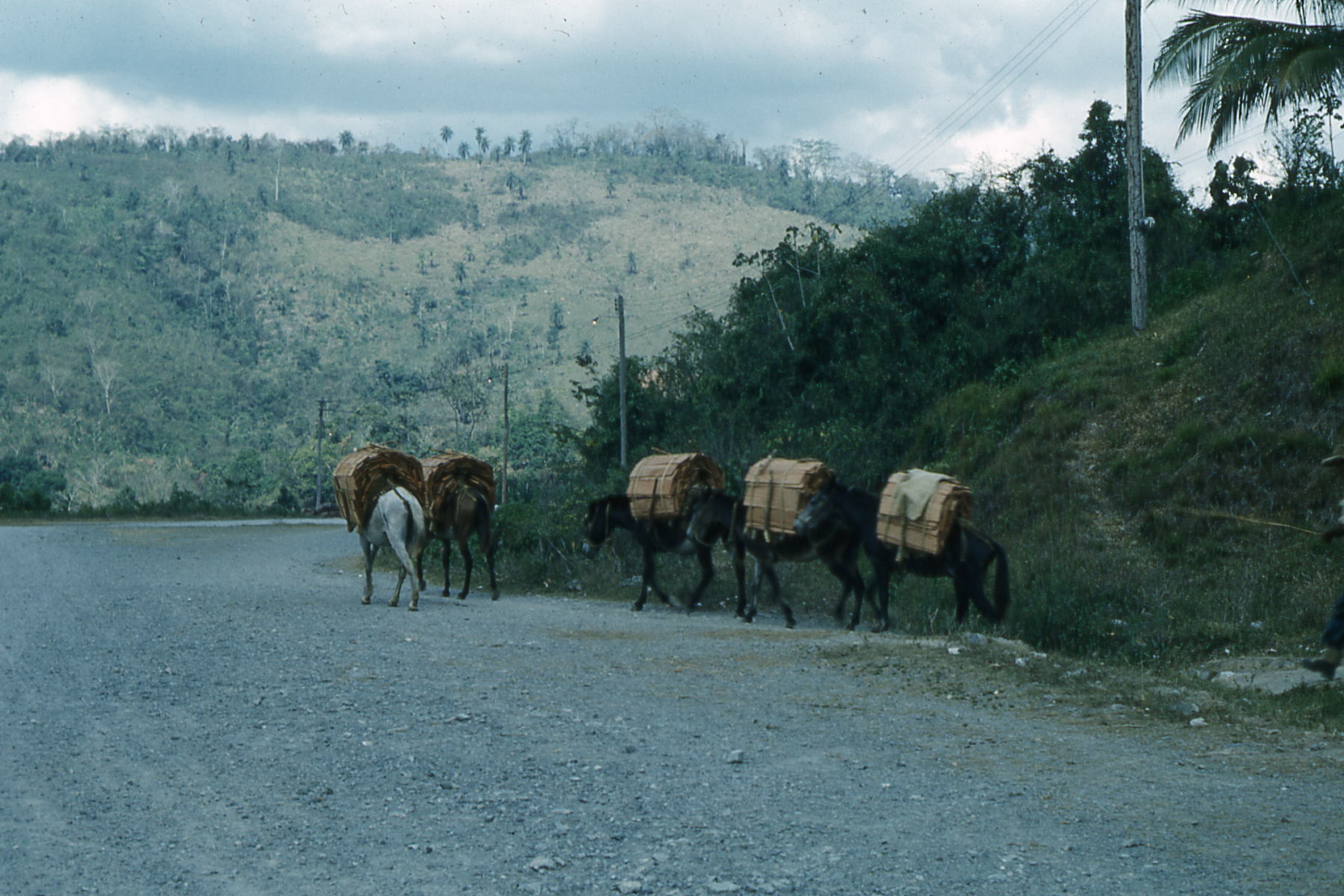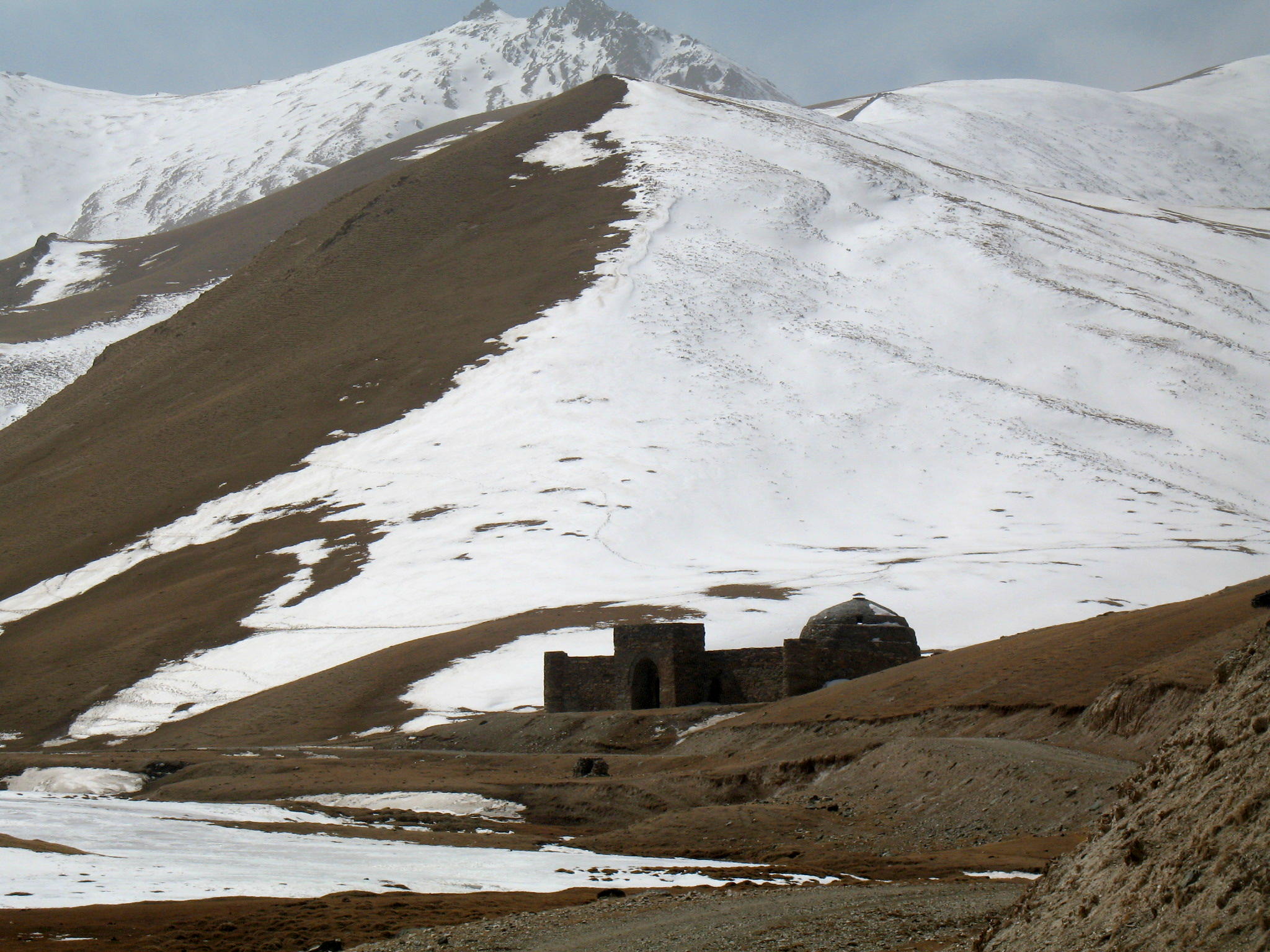State communications in the Neo-Assyrian Empire on:
[Wikipedia]
[Google]
[Amazon]
 The state communications in the Neo-Assyrian Empire allowed the Assyrian king and his officials to send and receive messages across the empire quickly and reliably. Messages were sent using a relay system (
The state communications in the Neo-Assyrian Empire allowed the Assyrian king and his officials to send and receive messages across the empire quickly and reliably. Messages were sent using a relay system (
 The state communication system was developed to solve the challenges of governing a large empire. It probably originated during the reign of
The state communication system was developed to solve the challenges of governing a large empire. It probably originated during the reign of
 The long-distance state messengers were mounted exclusively on mules. Assyria was the first civilization to use mules for this purpose. Mules are hybrids of a donkey father and a horse mother. They combine the strength of a horse and the ruggedness of a donkey. Their infertility and need of extensive training meant that they were expensive, but their strength, hardiness and low maintenance made them ideal for long-distance travel in the conditions and climates of the Neo-Assyrian Empire. Mules were also good at swimming streamsa common obstacle throughout Mesopotamia. Riders in the Assyrian communication system typically travelled with two mules, so that they did not become stranded if one became lame, and to alternate mounts in order to keep them fresh.
The long-distance state messengers were mounted exclusively on mules. Assyria was the first civilization to use mules for this purpose. Mules are hybrids of a donkey father and a horse mother. They combine the strength of a horse and the ruggedness of a donkey. Their infertility and need of extensive training meant that they were expensive, but their strength, hardiness and low maintenance made them ideal for long-distance travel in the conditions and climates of the Neo-Assyrian Empire. Mules were also good at swimming streamsa common obstacle throughout Mesopotamia. Riders in the Assyrian communication system typically travelled with two mules, so that they did not become stranded if one became lame, and to alternate mounts in order to keep them fresh.
 To support the communication system, governors of the empire maintained a series of stations in their provinces at regular intervals along the king's road. In
To support the communication system, governors of the empire maintained a series of stations in their provinces at regular intervals along the king's road. In
 The state communications in the Neo-Assyrian Empire allowed the Assyrian king and his officials to send and receive messages across the empire quickly and reliably. Messages were sent using a relay system (
The state communications in the Neo-Assyrian Empire allowed the Assyrian king and his officials to send and receive messages across the empire quickly and reliably. Messages were sent using a relay system (Assyrian
Assyrian may refer to:
* Assyrian people, the indigenous ethnic group of Mesopotamia.
* Assyria, a major Mesopotamian kingdom and empire.
** Early Assyrian Period
** Old Assyrian Period
** Middle Assyrian Empire
** Neo-Assyrian Empire
* Assyrian ...
: ''kalliu'') which was revolutionary for the early first millennium BCE. Messages were carried by military riders who travelled on mules. At intervals the riders stopped at purpose-built stations, and the messages were passed to other riders with fresh mounts. The stations were positioned at regular intervals along the imperial highway system. Because messages could be transmitted without delay and without waiting for riders to rest, the system provided unprecedented communication speed, which was not surpassed in the Middle East until the introduction of the telegraph
Telegraphy is the long-distance transmission of messages where the sender uses symbolic codes, known to the recipient, rather than a physical exchange of an object bearing the message. Thus flag semaphore is a method of telegraphy, whereas p ...
.
The efficiency of the system contributed to the Neo-Assyrian Empire
The Neo-Assyrian Empire was the fourth and penultimate stage of ancient Assyrian history and the final and greatest phase of Assyria as an independent state. Beginning with the accession of Adad-nirari II in 911 BC, the Neo-Assyrian Empire grew t ...
's dominance in the Middle East
The Middle East ( ar, الشرق الأوسط, ISO 233: ) is a geopolitical region commonly encompassing Arabia (including the Arabian Peninsula and Bahrain), Asia Minor (Asian part of Turkey except Hatay Province), East Thrace (Europ ...
and to maintaining cohesion throughout the empire. These Assyrian innovations were adopted by later empires, including the Achaemenid Empire which inherited and expanded the Assyrian communication network.
History
TheNeo-Assyrian Empire
The Neo-Assyrian Empire was the fourth and penultimate stage of ancient Assyrian history and the final and greatest phase of Assyria as an independent state. Beginning with the accession of Adad-nirari II in 911 BC, the Neo-Assyrian Empire grew t ...
was an Iron Age
The Iron Age is the final epoch of the three-age division of the prehistory and protohistory of humanity. It was preceded by the Stone Age ( Paleolithic, Mesolithic, Neolithic) and the Bronze Age ( Chalcolithic). The concept has been mostl ...
empire centered in Mesopotamia
Mesopotamia ''Mesopotamíā''; ar, بِلَاد ٱلرَّافِدَيْن or ; syc, ܐܪܡ ܢܗܪ̈ܝܢ, or , ) is a historical region of Western Asia situated within the Tigris–Euphrates river system, in the northern part of the ...
. The reign of Adad-nirari II
Adad-nirari II (reigned from 911 to 891 BC) was the first King of Assyria in the Neo-Assyrian period.
Biography
Adad-nirari II's father was Ashur-dan II, whom he succeeded after a minor dynastic struggle. It is probable that the accession encour ...
() was considered the start of the empire. He and his successorsup to the late seventh century BCEexpanded the empire to dominate most of the modern Middle East, from Egypt in the west to the Persian Gulf in the east. As the empire grew, it introduced various administrative and infrastructural innovations, which became templates for later empires, including the Roman and Persian empires.
Shalmaneser III
Shalmaneser III (''Šulmānu-ašarēdu'', "the god Shulmanu is pre-eminent") was king of the Neo-Assyrian Empire from the death of his father Ashurnasirpal II in 859 BC to his own death in 824 BC.
His long reign was a constant series of campai ...
(), when Assyria was already the largest power in the Middle East. In order to rule and maintain cohesion within the empire, the king, his court officials and his governors in the provinces needed a fast and reliable system to communicate.
Components
Mule
 The long-distance state messengers were mounted exclusively on mules. Assyria was the first civilization to use mules for this purpose. Mules are hybrids of a donkey father and a horse mother. They combine the strength of a horse and the ruggedness of a donkey. Their infertility and need of extensive training meant that they were expensive, but their strength, hardiness and low maintenance made them ideal for long-distance travel in the conditions and climates of the Neo-Assyrian Empire. Mules were also good at swimming streamsa common obstacle throughout Mesopotamia. Riders in the Assyrian communication system typically travelled with two mules, so that they did not become stranded if one became lame, and to alternate mounts in order to keep them fresh.
The long-distance state messengers were mounted exclusively on mules. Assyria was the first civilization to use mules for this purpose. Mules are hybrids of a donkey father and a horse mother. They combine the strength of a horse and the ruggedness of a donkey. Their infertility and need of extensive training meant that they were expensive, but their strength, hardiness and low maintenance made them ideal for long-distance travel in the conditions and climates of the Neo-Assyrian Empire. Mules were also good at swimming streamsa common obstacle throughout Mesopotamia. Riders in the Assyrian communication system typically travelled with two mules, so that they did not become stranded if one became lame, and to alternate mounts in order to keep them fresh.
Relay riders
Official messages could either be sent by letter carried by a series of relay riders or by a trusted envoy. The relay system (''kalliu'') was an Assyrian innovation and allowed for a much faster communication speed. Rather than relying on a trusted envoy to travel the entire distance, in the relay system each individual rider covered only a segment of the route. The segment ended at a station, where the rider passed the letter to a new rider with a fresh pair of mules. Because animals and riders were changed at each stop without waiting for the previous ones to rest, messages were delivered much faster. The riders and their mules were provided by the Assyrian military. Despite the speed of the relay system, trusted envoys were also used when communication speed was not vital, and were preferred for very sensitive messages or those which required on-the-spot responses. Sometimes both methods were used simultaneously, such as in the case of a surviving letter from then-crown princeSennacherib
Sennacherib ( Neo-Assyrian cuneiform: or , meaning " Sîn has replaced the brothers") was the king of the Neo-Assyrian Empire from the death of his father Sargon II in 705BC to his own death in 681BC. The second king of the Sargonid dynas ...
to his father Sargon II.
Road network
The Neo-Assyrian Empire built a highway system connecting all parts of the empire. These roads, called ''hūl šarri'' (or ''harran šarri'' in the Babylonian dialect, "the king's road"), might have grown out of the military roads used for campaigning. They were continuously expanded, with the largest expansion occurring between the reigns of Shalmaneser III () and Tiglathpileser III .Stations
 To support the communication system, governors of the empire maintained a series of stations in their provinces at regular intervals along the king's road. In
To support the communication system, governors of the empire maintained a series of stations in their provinces at regular intervals along the king's road. In Assyrian
Assyrian may refer to:
* Assyrian people, the indigenous ethnic group of Mesopotamia.
* Assyria, a major Mesopotamian kingdom and empire.
** Early Assyrian Period
** Old Assyrian Period
** Middle Assyrian Empire
** Neo-Assyrian Empire
* Assyrian ...
they were called ''bēt mardēti'' ("house of a route's stage"). At these stations riders passed their letters to new riders with fresh mules. They were either located within established settlements, such as the one in Nippur, or in remote locations, where they constituted isolated settlements on their own. The distances between stations were around . The stations provided short-term shelter and supplies for riders, envoys and their animals.
These stations were comparable to the later caravanserais built throughout the Muslim world for commercial travelers, in the sense that they were purpose-built to provide shelter for long-distance travellers. However, unlike the caravanserais, the Assyrian road stations were for the exclusive use of authorized state messages and not open to private travelers. No surviving road stations have been identified or excavated and historians only know their descriptions from Assyrian texts.
Authorization and authentication
Use of the imperialpostal system
The mail or post is a system for physically transporting postcards, letters, and parcels. A postal service can be private or public, though many governments place restrictions on private systems. Since the mid-19th century, national postal syst ...
was restricted to messages from a set of high state officials. Professor of ancient near-eastern history Karen Radner
Karen Radner (11 May 1972) is an Austrian Assyriologist, the Alexander von Humboldt Professor of Ancient History at the University of Munich.
Early life and education
Karen Radner started her studies at the University of Vienna in 1990 in Ancient ...
estimated that it was available to a group of about 150 officials who were called the "Great Ones" of Assyria. They all held a copy of the Assyrian royal seal which they stamped on messages to identify their authority. The seal depicted the Assyrian king in combat with a rampant
In heraldry, the term attitude describes the ''position'' in which a figure (animal or human) is emblazoned as a charge, a supporter, or as a crest. The attitude of an heraldic figure always precedes any reference to the tincture of the figure ...
lion and was recognized throughout the empire. Only letters carrying this seal could be sent using the state system.
Speed
Radner estimated that a message from the western border province ofQuwê
Quwê – also spelled Que, Kue, Qeve, Coa, Kuê and Keveh – was a Syro-Hittite Assyrian vassal state or province at various times from the 9th century BC to shortly after the death of Ashurbanipal around 627 BC in the lowlands of ea ...
(near modern-day Adana
Adana (; ; ) is a major city in southern Turkey. It is situated on the Seyhan River, inland from the Mediterranean Sea. The administrative seat of Adana province, it has a population of 2.26 million.
Adana lies in the heart of Cilicia, wh ...
, Turkey) to the Assyrian heartland
The Assyrian homeland, Assyria ( syc, ܐܬܘܪ, Āṯūr or syc, ܒܝܬ ܢܗܪ̈ܝܢ, Bêth Nahrin) refers to the homeland of the Assyrian people within which Assyrian civilisation developed, located in their indigenous Upper Mesopotamia. Th ...
as the crow files and requiring the crossing the Euphrates
The Euphrates () is the longest and one of the most historically important rivers of Western Asia. Together with the Tigris, it is one of the two defining rivers of Mesopotamia ( ''the land between the rivers''). Originating in Turkey, the Eup ...
, the Tigris
The Tigris () is the easternmost of the two great rivers that define Mesopotamia, the other being the Euphrates. The river flows south from the mountains of the Armenian Highlands through the Syrian and Arabian Deserts, and empties into the ...
and many tributaries, none of which had bridgestook less than five days to arrive. This communication speed was unprecedented and was not surpassed in the Middle East until the introduction of the telegraph
Telegraphy is the long-distance transmission of messages where the sender uses symbolic codes, known to the recipient, rather than a physical exchange of an object bearing the message. Thus flag semaphore is a method of telegraphy, whereas p ...
to the region during the Ottoman era in 1865.
Significance
The rapid long-distance communications between the imperial court and the provinces was important for the empire's cohesion and was one of the factors supporting the domination of theNeo-Assyrian Empire
The Neo-Assyrian Empire was the fourth and penultimate stage of ancient Assyrian history and the final and greatest phase of Assyria as an independent state. Beginning with the accession of Adad-nirari II in 911 BC, the Neo-Assyrian Empire grew t ...
in the Middle East. Mario Liverani
Mario Liverani (born 10 January 1939 in Rome), is an Italian historian and Professor of Ancient Near East History at the University of Rome La Sapienza. He is a member of many institutions, such as the American Oriental Society, Accademia delle Sci ...
says that Assyria was an "empire of communications", and Karen Radner opines that the imperial communication system "may well constitute Assyria's most important contribution to the art of government" and became "a standard tool in the administration of empires".
The system introduced by the Assyrians were adopted by later empires. The existing Assyrian network was considerably expanded by the Persian Empire. The system was also the basis of the nineteenth century Pony Express
The Pony Express was an American express mail service that used relays of horse-mounted riders. It operated from April 3, 1860, to October 26, 1861, between Missouri and California. It was operated by the Central Overland California and Pi ...
in the United States. The use of relays of anonymous messengersinstead of a trusted envoy who must travel the entire distancewas a practice that the Assyrians introduced and remains the basis of today's postal systems.
References
Citations
Bibliography
* * * * * * * {{Neo-Assyrian empire topics Communications by country Neo-Assyrian Empire Postal history 9th-century BC establishments